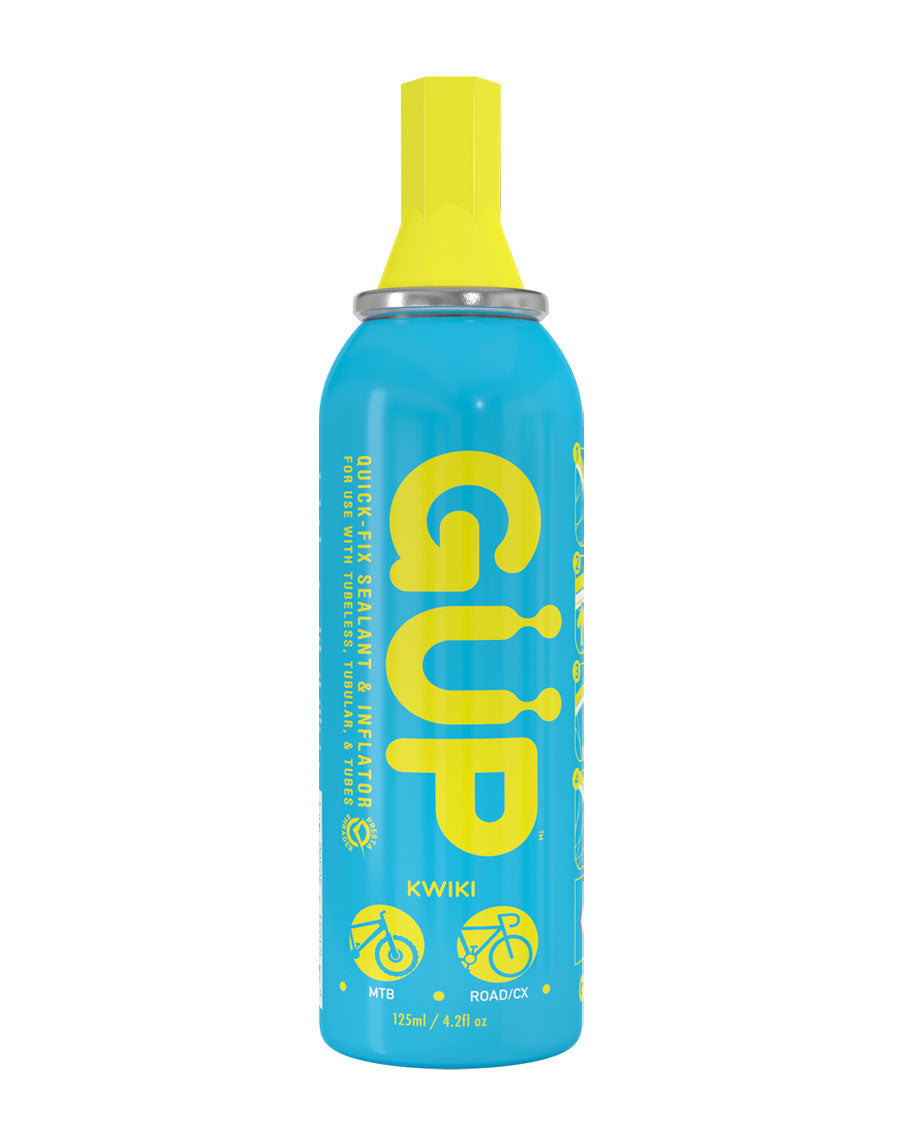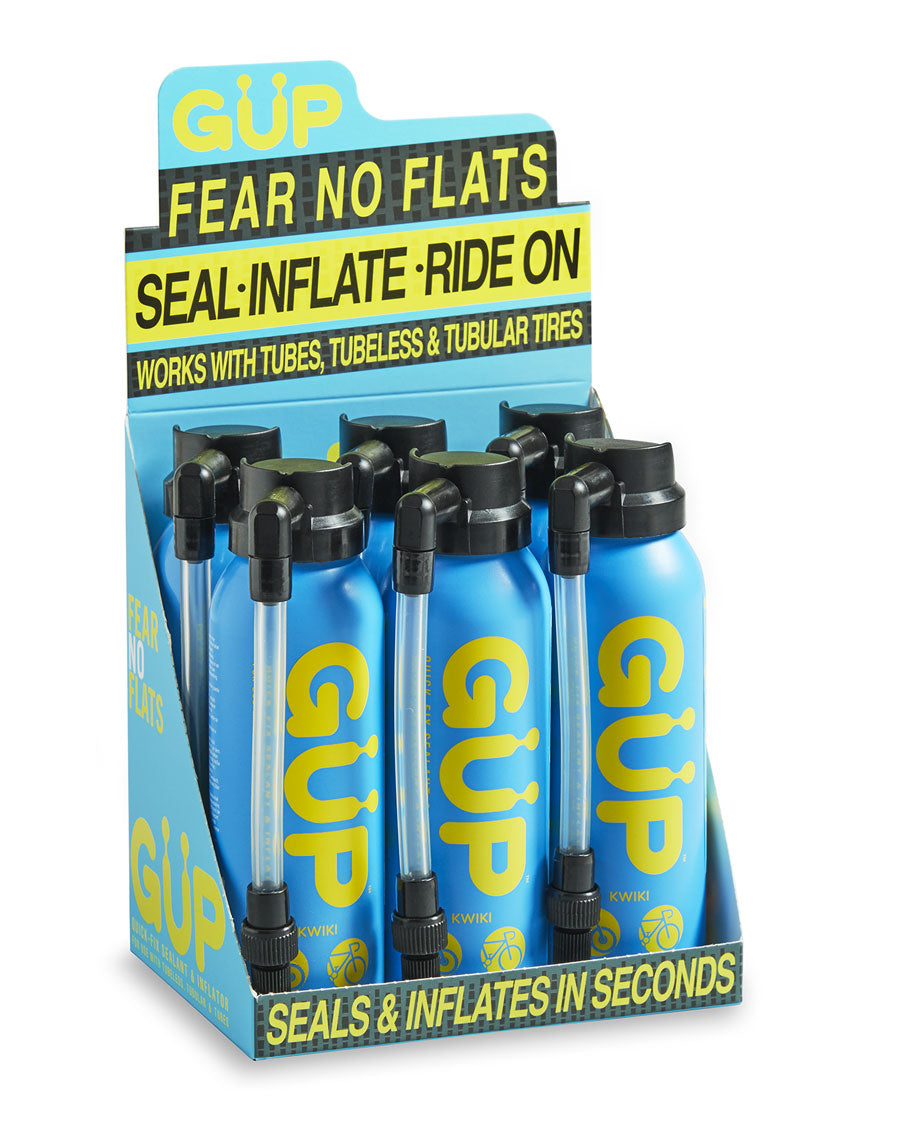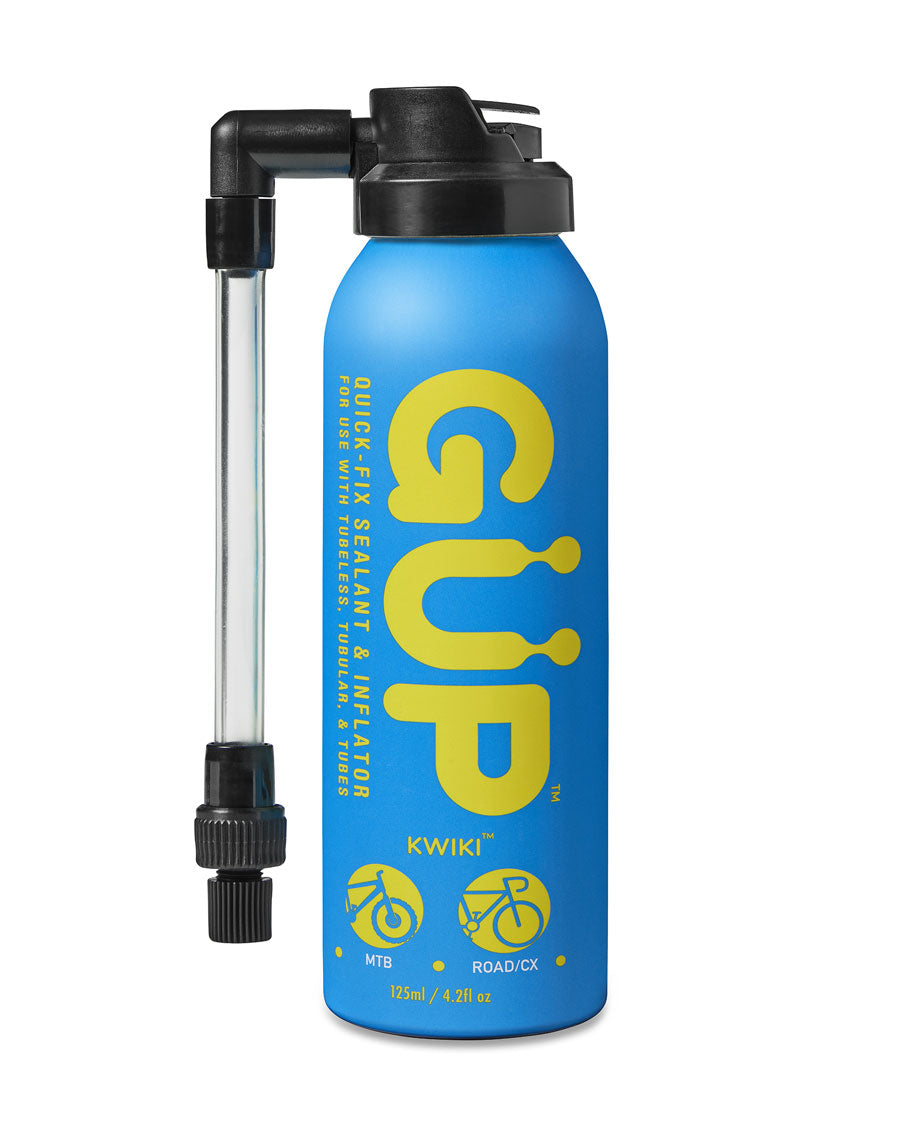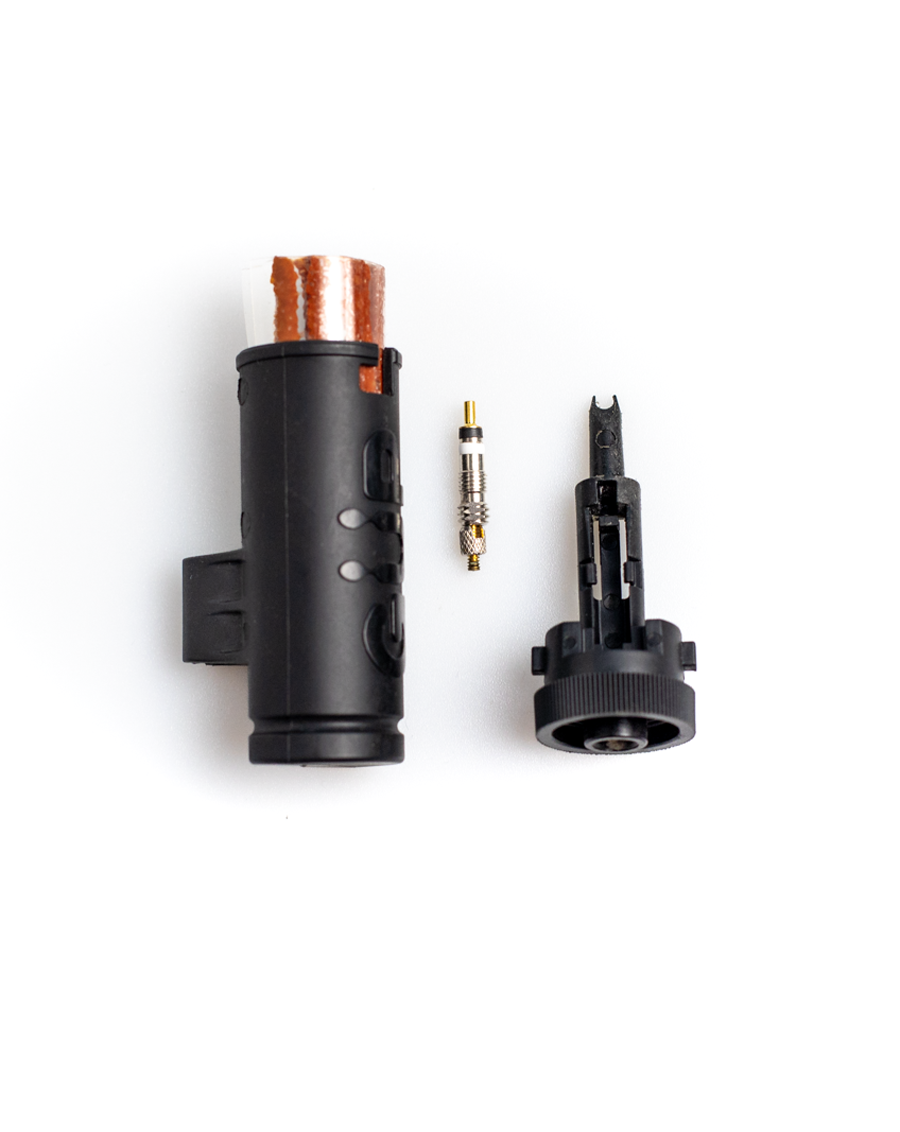Faqs
The correct pronunciation is “g-oop” and not “g-up”…obey the umlaut.
GÜP injects straight through the valve–either presta or Schrader, depending on the canister you have–without having to remove the actual valve core. It will initially enter looking like a foam and settle into liquid form after some time; continuing to fight future punctures.
Chances are, yes! GÜP is compatible with most major sealants on the market; both latex and non-latex based.
We were filling 29x2.4s to around 30psi and most road tires between 90-110psi; depending on the puncture, of course.
No. In fact, most people leave it inside their tire or tube as an extra layer of protection against future punctures.
We always encourage riders to check the severity of the puncture or tear after completing their ride to determine whether they should replace it.
GÜP’s foaming formula has been proven to give a much higher chance of sealing a sidewall tear or puncture because it can actually get to it unlike pure liquid sealants.
No…don’t even try it.
We always encourage riders to watch our video tutorials for step by step instructions.
After you’ve filled your tire/tube, position the puncture to the lowest point of the wheel to ensure as much as possible can get to the affected area. Giving the tire a few bounces is also helpful; along with getting it into some dirt/soil to form a seal scab. With larger tears or challenging sidewall punctures, it best to let a bit of sealant flow out of the puncture before applying pressure with your finger for a minute. Again, positioning the tire in a way to allow our formula to get to the punctured area.
Although we encourage people to exhaust the entire canister to allow as much sealant and pressure as possible, we have also been told that some people get as many as 3 uses out of one can. Unlike a pierced CO2 canister, our blue bottles are spring actuated; which means as long as there’s still pressure remaining within, it’ll inflate!
It’s about 118grams; which means it’s sometimes lighter than a tube.
Depending on conditions, it will normally stay liquid for about 45-60 days after it’s converted into liquid form; drying like a thin rubber seal on the inside of your tire wall. Within a tube, it will remain liquid much longer.
Have a question which we didn’t already answer? Write to us HERE.





